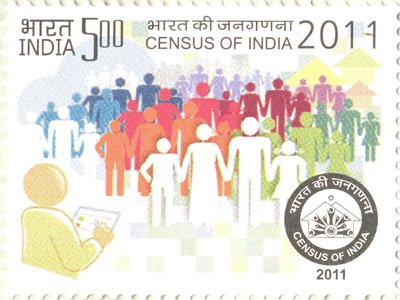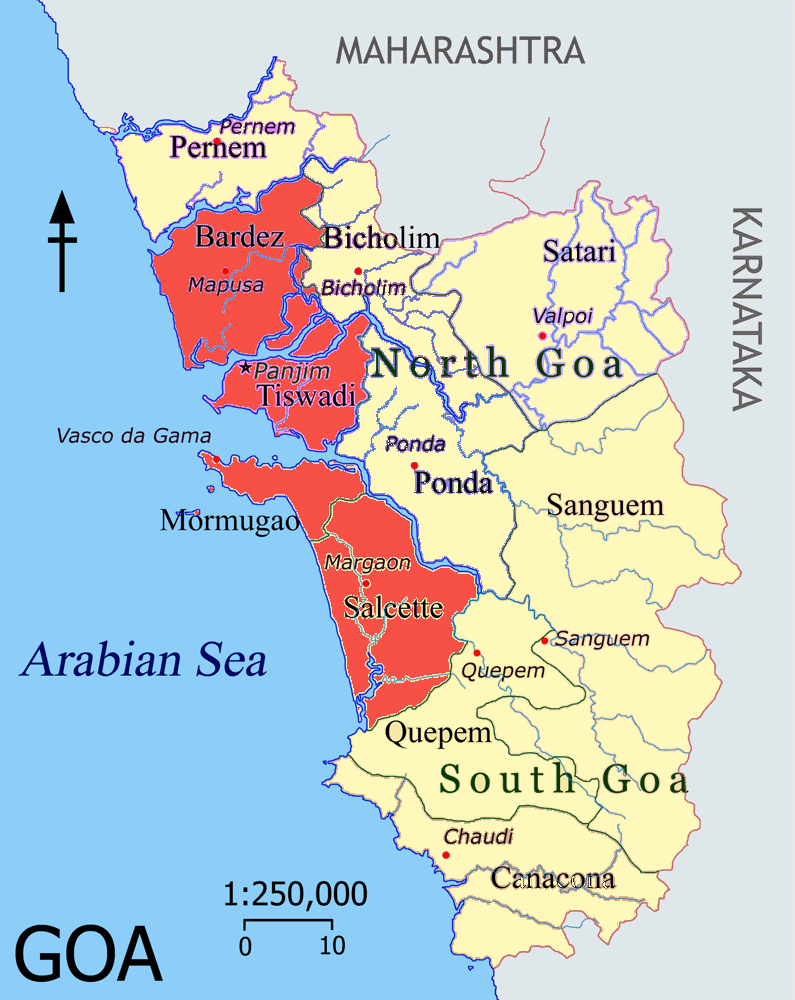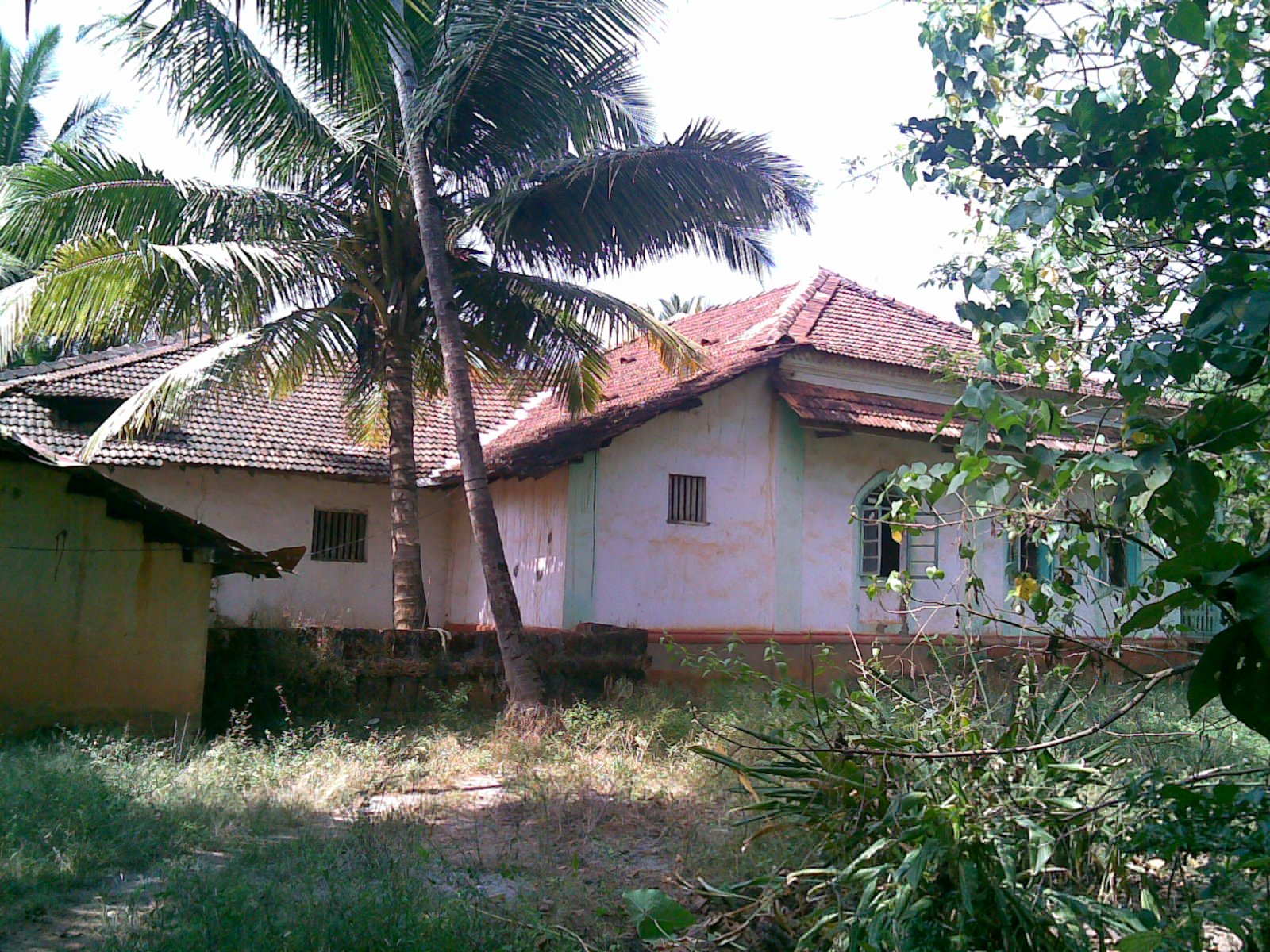|
Wadi Talaulim
Wadi-Talaulim is a village in Ponda taluka of Goa, India. As of 2018, it has a population of 3,800. Etymology Wadi Talaulim derives its name from Konkani, in which ''Talaulim'' means ‘land between three mountains and a river’ while ''Wadi'' is a place where a few farmers and other villagers reside. Location A 4-kilometre drive from Ponda brings you into Wadi-Talaulim. It is located 25 kilometres east of the state capital Panaji. The village is bordered by Borim, Durbhat and Quela on one side and the Zuari river on the other. History Wadi and Talaulim were two separate villages, as they belonged to separate communidades. A few years after the liberation of Goa in 1961, they began being governed by the same panchayat. Both, Wadi and Talaulim have many temples, dedicated to Hindu deities like Narayan Dev, Hanuman, Ganpati, Krishna, Shree Bhutnath, Mahalaxmi and Sateri Ladbai. Most residents of Wadi-Talaulim are originally from Salcete’s villages of Loutolim, Colva, et ... [...More Info...] [...Related Items...] OR: [Wikipedia] [Google] [Baidu] |
List Of Sovereign States
The following is a list providing an overview of sovereign states around the world with information on their status and recognition of their sovereignty. The 206 listed states can be divided into three categories based on membership within the United Nations System: 193 member states of the United Nations, UN member states, 2 United Nations General Assembly observers#Present non-member observers, UN General Assembly non-member observer states, and 11 other states. The ''sovereignty dispute'' column indicates states having undisputed sovereignty (188 states, of which there are 187 UN member states and 1 UN General Assembly non-member observer state), states having disputed sovereignty (16 states, of which there are 6 UN member states, 1 UN General Assembly non-member observer state, and 9 de facto states), and states having a political status of the Cook Islands and Niue, special political status (2 states, both in associated state, free association with New Zealand). Compi ... [...More Info...] [...Related Items...] OR: [Wikipedia] [Google] [Baidu] |
Panchayati Raj (India)
Panchayati Raj (Council of five officials) is the system of local self-government of villages in rural India as opposed to urban and suburban municipalities. It consists of the Panchayati Raj Institutions (PRIs) through which the self-government of villages is realized. They are tasked with "economic development, strengthening social justice and implementation of Central and State Government Schemes including those 29 subjects listed in the Eleventh Schedule." Part IX of the Indian Constitution is the section of the Constitution relating to the Panchayats. It stipulates that in states or Union Territories with more than two million inhabitants there are three levels of PRIs: *the Gram Panchayats at village level *the Mandal Parishad or Block ''Samiti'' or Panchayat Samiti at block level and *the Zila Parishad at district level. In states or Union Territories with less than two million inhabitants there are only two levels of PRIs. The Gram Sabha consists of all registe ... [...More Info...] [...Related Items...] OR: [Wikipedia] [Google] [Baidu] |
Scheduled Tribes
The Scheduled Castes (SCs) and Scheduled Tribes (STs) are officially designated groups of people and among the most disadvantaged socio-economic groups in India. The terms are recognized in the Constitution of India and the groups are designated in one or other of the categories. For much of the period of British rule in the Indian subcontinent, they were known as the Depressed Classes. In modern literature, the ''Scheduled Castes'' are sometimes referred to as Dalit, meaning "broken" or "dispersed", having been popularised by B. R. Ambedkar (1891–1956), a Dalit himself, an economist, reformer, chairman of the Constituent Assembly of India, and Dalit leader during the independence struggle. Ambedkar preferred the term Dalit to Gandhi's term, Harijan, meaning "person of Hari/Vishnu" (or Man of God). In September 2018, the government "issued an advisory to all private satellite channels asking them to 'refrain' from using the nomenclature 'Dalit'", though "rights groups a ... [...More Info...] [...Related Items...] OR: [Wikipedia] [Google] [Baidu] |
2011 Census Of India
The 2011 Census of India or the 15th Census of India, Indian Census was conducted in two phases, house listing and population enumeration. The House listing phase began on 1 April 2010 and involved the collection of information about all buildings. Information for National Population Register (NPR) was also collected in the first phase, which will be used to issue a 12-digit unique identification number to all registered Indian residents by Aadhaar, Unique Identification Authority of India. The second population enumeration phase was conducted between 9 and 28 February 2011. Census has been conducted in India since 1872 and 2011 marks the first time biometric information was collected. According to the provisional reports released on 31 March 2011, the Indian population increased to 1.21 billion with a decadal growth of 17.70%. Adult literacy rate increased to 74.04% with a decadal growth of 9.21%. The motto of the census was 'Our Census, Our future'. Spread across 28 States of ... [...More Info...] [...Related Items...] OR: [Wikipedia] [Google] [Baidu] |
Canacona
Canacona () is a city and a municipal council in the district of South Goa, Goa state, India. Canacona taluka includes Patnem, Chaudi, Poinguinim, Loliem-Polem, Agonda, and Gaumdongre. Chaudi is the headquarters and the most developed town in this taluka. The famous Palolem Beach is located in Canacona. Geography Canacona is located at . It has an average elevation of 10 metres (32 feet). Canacona is the southernmost taluka of Goa. History The historical name of Canacona is "Kanvapura" Education Dnyna Prabodhini Mandal's Shree Mallikarjun College of Arts & Commerce located at Delem Canacona Goa. Affiliated to Goa University, is the prime educational institute of this taluka catering to higher educational needs of the area. There are two higher Secondaries in Canacona. Demographics India census, Canacona city had a population of 12,434. Males constitute 52% of the population and females 48%. Canacona has an average literacy rate of 89.31%, higher than ... [...More Info...] [...Related Items...] OR: [Wikipedia] [Google] [Baidu] |
Christianization Of Goa
The indigenous population of the erstwhile Portuguese colony of Goa, Daman and Diu underwent Christianisation following the Portuguese conquest of Goa in 1510. The converts in the '' Velhas Conquistas'' (Old Conquests) to Roman Catholicism were then granted full Portuguese citizenship. Almost all present-day Goan Catholics are descendants of these native converts, they constitute the largest Indian Christian community of Goa state and account for 25 percent of the population. Many Kudali, Mangalorean & Karwari Catholics in present-day Karnataka and Maharashtra are also of Goan descent due to migration in the 16th and 17th centuries. Korlai and Bombay East Indian Catholics of the Konkan division, and the Damanese of Damaon, Diu & Silvassa have had Goan admixture and interactions in the Portuguese Bombay territory, which was ruled from the capital in Old Goa. Bombay East Indians were formerly Portuguese citizens until the seven islands of Bombay were taken over by the Bri ... [...More Info...] [...Related Items...] OR: [Wikipedia] [Google] [Baidu] |
Velhas Conquistas
{{Unreferenced, date=November 2008 ''As Velhas Conquistas'' or "the Old Conquests" are a grouping of the areas in Goa which were incorporated into Portuguese India early in the sixteenth century AD; as these areas underwent urbanisation they were elevated to ''concelhos'' (municipalities) by the Portuguese Viceroyalty that ruled from the administrative centre at Velha Goa. Having been acquired in AD 1510 or within the next few years, they formed the oldest parts and the core of Portuguese Goa and remain as the central theme in the history geography and culture of present-day Goa and Damaon. The ''Novas Conquistas'' or New Conquests formed the outer periphery of Goa bordering the erstwhile British India. ''Novas Conquistas'' of present-day Goa shares borders with the Konkan province of Maharashtra, and also with Belgaum and North Canara districts of Carnatica. The three ''concelhos'' of the territory are ''Bardes'' (Bardez), ''Ilhas de Goa'' (Tiswadi), and ''Salcette'' (modern-day ... [...More Info...] [...Related Items...] OR: [Wikipedia] [Google] [Baidu] |
Portuguese Conquest Of Goa
The Portuguese conquest of Goa occurred when the governor Afonso de Albuquerque captured the city in 1510 from the Adil Shahis. Goa became the capital of the Portuguese State of India which included possessions such as Fort Manuel, the territory of Bom Bahia, Damann and Chaul. It was not among the places Albuquerque was supposed to conquer. He did so after he was offered the support and guidance of Timoji and his troops. Albuquerque had been given orders by Manuel I of Portugal to capture Ormus, Aden and Malacca only.''Conversions and citizenry: Goa under Portugal, 1510–1610'' Délio de Mendonça pg. 82''ff'/ref> Background On November 4, 1509, Afonso de Albuquerque succeeded Dom Francisco de Almeida as Governor of the Portuguese State of India, after the arrival in India of the Marshal of Portugal Dom Fernando Coutinho, sent by King Manuel to enforce the orderly succession of Albuquerque to office. Unlike Almeida, Albuquerque realized that the Portuguese could take ... [...More Info...] [...Related Items...] OR: [Wikipedia] [Google] [Baidu] |
Colva
Colva is a seaside village situated in Salcete subdistrict, South Goa district, Goa state on the west coast of India. Colva Beach spans about along a sandy coastline of approximately extending from Bogmalo in the north to Cabo de Rama in the south. The village had significant importance to Portuguese and was the retreat for Goa's high society, who would come to Colva for their (change of air). Today the Portuguese area is dotted with houses or villas, including many ruins. On weekends, huge crowds of tourists, visitors from around the world as well as local Indians, enjoy the sunset and various activities. The beach is particularly busy in October, when hordes of religious pilgrims come and visit Colva Church, called (Church of Our Lady of Mercies), that was founded in AD 1630 by the Roiz family and rebuilt in the eighteenth century on the village square. The local people have been fishermen since the mid-16th century. They include Hindu converts as well as migrants fr ... [...More Info...] [...Related Items...] OR: [Wikipedia] [Google] [Baidu] |
Loutolim
Loutolim or Loutulim ''Lottli'' pronounced:, Portuguese: ''Loutulim)'' is a large village of South Goa district in the state of Goa, India. It is an important settlement in the Salcete sub-district. Etymology Loutolim derives its name from ''Lovótollem'', coined from the Konkani words—''Lovó'', a type of grass and ''Tollem'', a pond—since those grasses used to grow abundantly around the pond. In Konkani, the local language, the village is known as ''Lottli'' and its native inhabitants are referred to as ''Lottlikar''. History According to a legend, Brahmins from northern India founded the settlement of Loutolim when they emigrated to Goa after the Saraswati River in their homeland dried up. The village community was based around the temple of Shri Ramnath. There were other smaller temples dedicated to Shri Santeri ( Shantadurga) in the village. A new temple of Shri Ramnath was built recently at the same spot. The original idol of Shri Ramnath ... [...More Info...] [...Related Items...] OR: [Wikipedia] [Google] [Baidu] |
Salcete
Salcete ( Konkani: ''Saxtti''/''Xaxtti''; pt, Salcette) is a sub-division of the district of South Goa, in the state of Goa, situated by the west coast of India. The Sal river and its backwaters dominate the landscape of Salcete. Historically, the sixty-six settlements south of the River Zuari formed the original Salcette territory. Salcete forms a part of the bigger Konkan region that stretches along the western shoreline of peninsular India. In erstwhile Portuguese Goa, the Salcette ''concelho'' (county) located in the '' Velhas Conquistas'' (Old Conquests) was co-terminous with the undivided Salcette territory (Salcete and Mormugaõ ''talukas''). In 1917, the ''concelho'' was bifurcated into the present-day ''talukas'' of Mormugao and Salcette. The contemporary Salcete ''taluka'' has been classified as a rurban area. Margao serves as the administrative headquarters of both Salcete ''taluka'' and the South Goa district. Etymology "Salcete" is the modern ang ... [...More Info...] [...Related Items...] OR: [Wikipedia] [Google] [Baidu] |
Krishna
Krishna (; sa, कृष्ण ) is a major deity in Hinduism. He is worshipped as the eighth avatar of Vishnu and also as the Supreme god in his own right. He is the god of protection, compassion, tenderness, and love; and is one of the most popular and widely revered among Indian divinities. Krishna's birthday is celebrated every year by Hindus on Krishna Janmashtami according to the lunisolar Hindu calendar, which falls in late August or early September of the Gregorian calendar. The anecdotes and narratives of Krishna's life are generally titled as ''Krishna Leela''. He is a central character in the ''Mahabharata'', the '' Bhagavata Purana'', the '' Brahma Vaivarta Purana,'' and the '' Bhagavad Gita'', and is mentioned in many Hindu philosophical, theological, and mythological texts. They portray him in various perspectives: as a god-child, a prankster, a model lover, a divine hero, and the universal supreme being. Quote: "Krsna's various appearances as ... [...More Info...] [...Related Items...] OR: [Wikipedia] [Google] [Baidu] |




.jpg)



